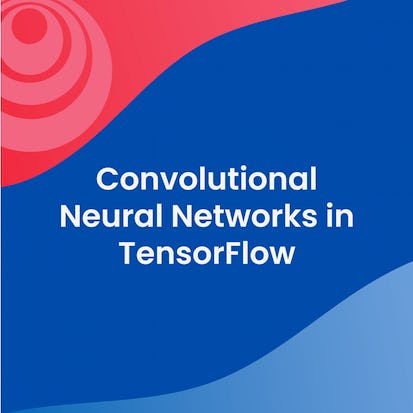- Level Professional
- Duration 30 hours
- Course by DeepLearning.AI
-
Offered by

About
AI is transforming the practice of medicine. It's helping doctors diagnose patients more accurately, make predictions about patients' future health, and recommend better treatments. This Specialization will give you practical experience in applying machine learning to concrete problems in medicine. Machine learning is a powerful tool for prognosis, a branch of medicine that specializes in predicting the future health of patients. In this second course, you'll walk through multiple examples of prognostic tasks. You'll then use decision trees to model non-linear relationships, which are commonly observed in medical data, and apply them to predicting mortality rates more accurately. Finally, you'll learn how to handle missing data, a key real-world challenge. These courses go beyond the foundations of deep learning to teach you the nuances in applying AI to medical use cases. This course focuses on tree-based machine learning, so a foundation in deep learning is not required for this course. However, a foundation in deep learning is highly recommended for course 1 and 3 of this specialization. You can gain a foundation in deep learning by taking the Deep Learning Specialization offered by deeplearning.ai and taught by Andrew Ng.Modules
Introduction to Prognostic models
2
Videos
- Course 2 Intro with Andrew and Pranav
- Prerequisites and Learning Outcomes
1
Readings
- [IMPORTANT] Have questions, issues or ideas? Join our Forum!
What is the Risk of Getting a Disease?
1
Labs
- Create a Linear Model
1
Videos
- Medical Prognosis
Prognostic Models in Medical Practice
1
Labs
- Risk Scores, Pandas and Numpy
4
Videos
- Examples of Prognostic Tasks
- Atrial Fibrillation
- Liver Disease Mortality
- Risk of Heart Disease
Representing Feature Interactions
1
Labs
- Combine Features
1
Videos
- Risk Score Computation
Evaluating Prognostic Models
1
Labs
- Concordance Index
3
Videos
- Evaluating Prognostic Models
- Concordant Pairs, Risk Ties, Permissible Pairs
- C-Index
Quiz
1
Assignment
- Prognostic Models
Programming Assignment: Build and Evaluate a Linear Risk model
- Build and Evaluate a Linear Risk model
2
Readings
- (Optional) Downloading your Notebook, Downloading your Workspace and Refreshing your Workspace
- About the AutoGrader
Tree-based Models
1
Labs
- Decision Tree Classifier
5
Videos
- Decision Trees for Prognosis
- Decision Trees
- Dividing the Input Space
- Building a Decision Tree
- How to Fix Overfitting
Identifying Missing Data
1
Labs
- Missing Data and Applying a Mask
6
Videos
- Survival Data
- Different Distributions
- Missing Data Example
- Missing Completely at Random
- Missing at Random
- Missing Not at Random
Using Imputation to Handle Missing Data
1
Labs
- Imputation
4
Videos
- Imputation
- Mean Imputation
- Regression Imputation
- Calculate Imputed Values
Quiz
1
Assignment
- Decision Trees, Missing Data and Imputation
Programming Assignment: Risk Models Using Tree-based Models
- Risk Models Using Tree-based Models
Survival Estimates
3
Videos
- Survival Models
- Survival Function
- Valid Survival Functions
Time to Event Data
4
Videos
- Collecting Time Data
- When a Stroke is Not Observed
- Heart Attack Data
- Right Censoring
Estimate Survival with Censored Data
2
Labs
- Counting Patients
- Kaplan Meier
9
Videos
- Estimating the Survival Function
- Died Immediately, or Never Die
- Somewhere in-between
- Using Censored Data
- Chain Rule of Conditional Probability
- Deriving Survival
- Calculating Probabilities from the Data
- Comparing Estimates
- Kaplan Meier Estimate
Quiz
1
Assignment
- Survival
Programming Assignment: Survival Estimates that Vary with Time
- Survival Estimates that Vary with Time
Survival and Hazard Functions
1
Labs
- Categorical Variables
4
Videos
- Hazard Functions
- Hazard
- Survival to Hazard
- Cumulative Hazard
Customizing Risk Models to Individual Patients
1
Labs
- Hazard Function
8
Videos
- Individualized Predictions
- Relative Risk
- Ranking Patients by Risk
- Individual vs Baseline Hazard
- Smoker vs Non-smoker
- Effect of Age on Hazard
- Risk Factor Increase Per Unit Increase in a Variable
- Risk Factor Increase or Decrease
Non-linear Risk Models with Survival Trees
5
Videos
- Intro to Survival Trees
- Survival Tree
- Nelson Aalen Estimator
- Comparing Risks of Patients
- Mortality Score
Evaluate Survival Models
1
Labs
- Permissible Pairs with Censoring and Time
6
Videos
- Evaluation of Survival Model
- Permissible and Non-Permissible Pairs
- Possible Permissible Pairs
- Example of Harrell's C-Index
- Example of Concordant Pairs
- Week 4 Summary
Quiz
1
Assignment
- Week 4
End of access to Lab Notebooks
1
Readings
- [IMPORTANT] Reminder about end of access to Lab Notebooks
Programming Assignment: Cox Proportional Hazards and Random Survival Forests
- Cox Proportional Hazards and Random Survival Forests
Congratulations!
1
Videos
- Congratulations!
3
Readings
- Congratulations on finishing course 2!
- Acknowledgements
- Citations
Auto Summary
"AI for Medical Prognosis" is a professional course offered by Coursera, focusing on applying machine learning to medical prognosis. Led by expert instructors, it covers decision trees, handling missing data, and predicting patient outcomes. This 1800-minute course does not require deep learning experience and is ideal for data science and AI professionals looking to specialize in medical applications. Subscription options include a Starter plan.

Pranav Rajpurkar

Bora Uyumazturk


